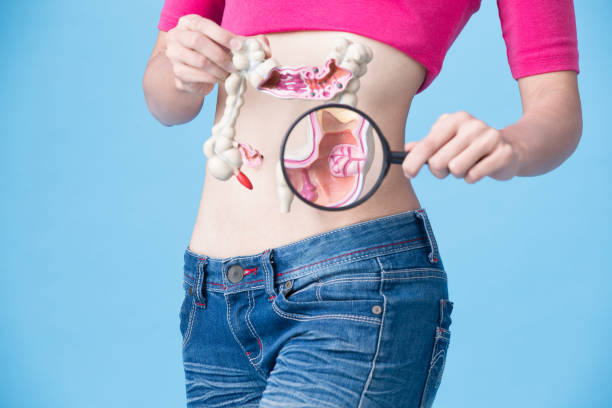Fecal Transplants Are a Thing Apparently
An average person has over 400 different types of bacteria present in the gut and many other microbes. These gut flora are extremely useful to the body and carry out a number of vital functions which does not include making your coffee in the morning – sorry – you need to keep doing that yourself!
They enhance the immune system, prevent overgrowth of bad bacteria, and play a major role in breaking down certain kinds of undigested carbohydrates. Without a healthy gut microbiome, you are at risk of number of digestive disorders and overgrowth of pathogens.
This is where fecal transplants or fecal bacteriotherapy has a role to play.
What is Fecal Microbiota Transplantation (FMT)?
This is an innovative investigational treatment in which the fecal preparation from a carefully screened, healthy stool donor is transplanted into the colon of the patient. There are multiple routes of administration like naso-enteric tube, colonoscopy, and capsules.
The idea behind fecal transplantation is that sometimes the bacteria ‘starter culture’ which everyone receives from their mother gets severely damaged and is not able to colonize the gut effectively. In these types of situations, a second starter culture is required to help the gut microbiome grow to normal levels.
How Doe Fecal Transplants Help?
FMT works by repopulating a patient’s microbiome with diverse microorganisms to replace bacteria that has been lost or destroyed by a disease or medical treatment. In a normal digestive system, there are hundreds of different bacteria that work collectively to keep any one strain from overgrowing.
A healthy balance in the gut is necessary for effective digestion, preventing allergic reactions and enhancing immune functions. This balance is a delicate one and external influencers, like stress, poor diet and antibiotics can interfere, resulting in overgrowth.
In most cases, the digestive system is able to bounce back from the devastating effects of external factors, re-growing the normal flora.
However, sometimes overgrowth occurs in repeated bouts. The gastrointestinal distress can be too much for the small amount of gut flora left to make a difference. Fecal bacteriotherapy is an important treatment option in such situations.
FMT is used to effectively treatstubborn or severe clostridium difficilecolitis, commonly known as C. diff. C.
This condition typically results from a course of therapy with antibiotics that cannot differentiate the bad bacteria from the good bacteria and results in wiping off whole colonies of good bacteria. C. diff can lead to a longer recovery or a surgery in severely ill patients.
A fecal transplant might not be required for the average person who contracts C. diff. However, this treatment might be the only option left to dramatically improve the quality of life of those with recurrent infections.
Does it really work?
Squeamishness is one of the major reasons behind people not having FMT procedures. However, the concept of accepting an infusion of donor feces becomes more tolerable when faced with recurrent gastrointestinal problem, which severely affects the quality of life – kind of like what is happening in Venezuela, south Chicago, or most of NYC where the quality of life is horrible now but this is another topic.
Severe, recurrent and ongoing diarrhea is one of the more common symptoms of the conditions that necessitate a fecal transplant. In one trial an infusion of feces cured 94% of the patients suffering from C. difficile infection, while the usual treatment, an antibiotic called vancomycin, only cured 27%.
Most gastroenterologists agree that apart from being effective, FMT is also safe. The American College of Gastroenterology states in their treatment guideline that there have been no known effects or complications directly attributable to a FMT procedure.
Currently, fecal transplants are commonly accepted as a treatment for multiple intestinal disease processes and are in the experimental phase for treating inflammatory bowel disease and ulcerative colitis.
How is it performed?
Fecal transplantation is usually performed by colonoscopy. However, there are some clinics where it is performed through naso-duodenal tube as well. The fecal sample needs to be obtained within 6 hours prior to the procedure.
The donor should not have had any antibiotic exposure in the last 6 months and must not be immune-compromised. The donor should also not have a history of drug use, incarceration, or have indulged in high-risk sexual behavior which Bree Van De Kamp knows all about in that ridiculous Desperate Housewives show and Tiffany in that stellar Silver Linings Playbook as well but let’s get back on track here.
The sample is tested and examined for intestinal parasites. It is also checked for other signs of illnesses that might rule out the donor. The sample, if found appropriate, is prepared for transplantation by mixing it with sterile water and filtering through a coffee filter to remove any solid particles.
If the enema or colonoscopy method is used, then the stool sample is infused into the rectum and held there for as long as possible. This process of directly introducing the normal flora back into the intestinal tract is done repeatedly over 5 to 10 days.
Sometimes, a feeding tube is used to infuse the stool sample directly into the intestine. First the tube is inserted into the nose and down into the stomach until it stops at the intestines.
This tube is typically used to feed patients that are unable to tolerate typical foods. The fecal sample is then prepared and inserted directly through the tube, into the intestines.
Patients are mostly given a sedative if they have the procedure performed at a clinic. Fecal transplant through colonoscopy is the more common method of introducing good bacteria and restoring the natural gut flora.
There is another new technique under study to introduce new microbes to the intestines. Autologous restoration of gastrointestinal flora or ARGF is for patients who are at risk for destruction of the normal flora of the intestine.
You will be asked for a stool sample which will be stored. If needed, the feces will be filtered and freeze dried to protect all the beneficial microbe strains.
The sample will be shaped into a capsule and coated, like ibuprofen and other medications. This will ensure that the sample retains its shape and does not dissolve in the stomach itself.
The coating, much like enteric coating, ensures the sample reaches the intestines. This technique like colonoscopy or enema and feeding tube also places the flora sample directly into the intestines.
Final Thoughts
Researchers are currently exploring FMT’s potential role for treating severe and chronic gastrointestinal issues. However, stool is a complex living mixture of bacteria and other organisms and fecal transplantation is not without its own risks.
Make sure you discuss all options with your medical practitioner and if this person is named Napoleon Dynamite then you may have some issues but you get the point.




